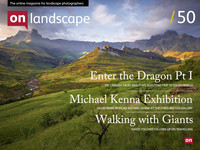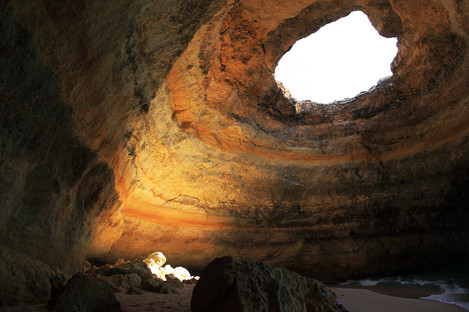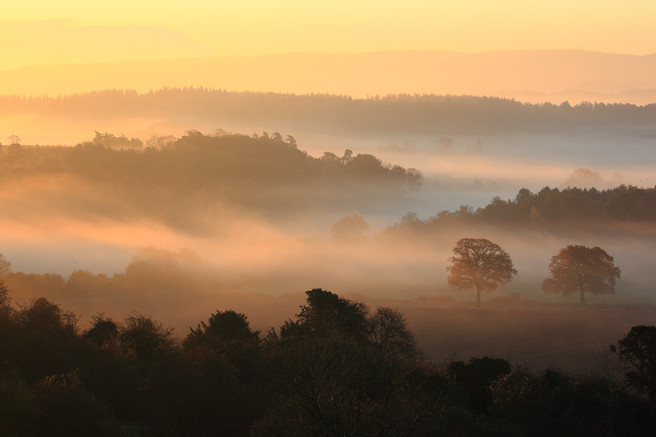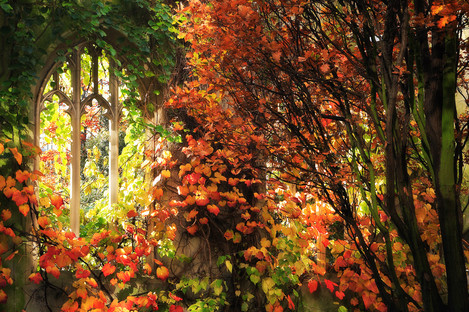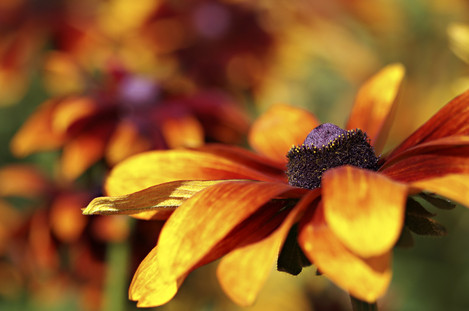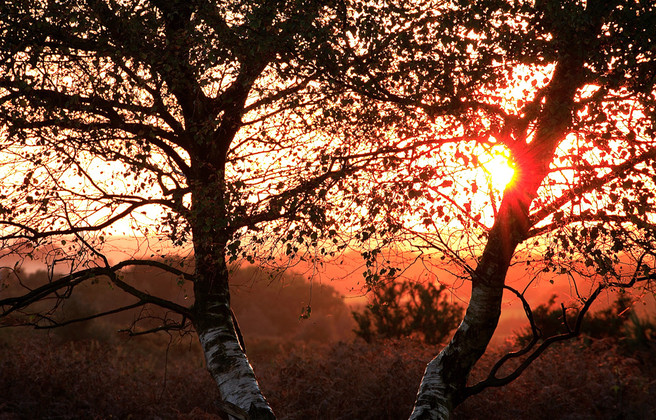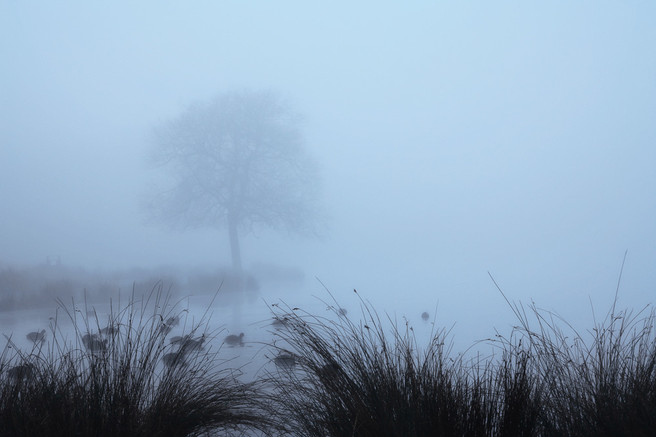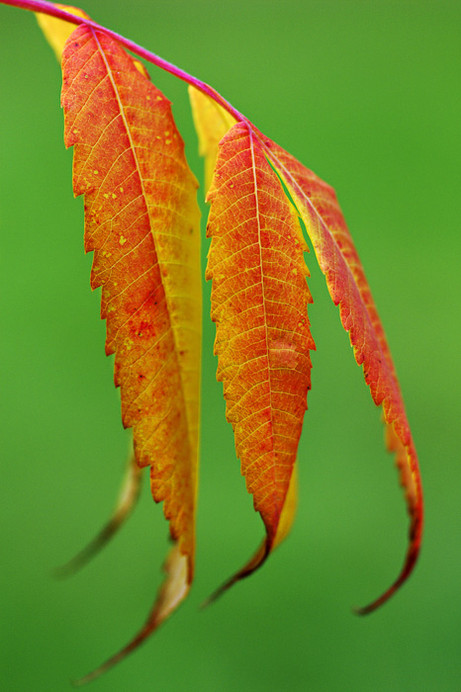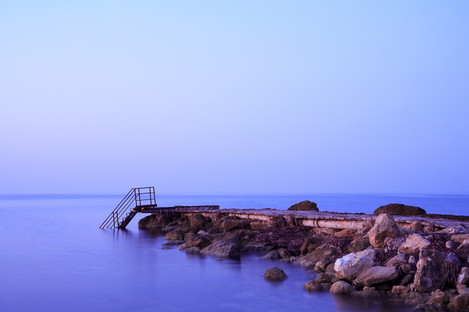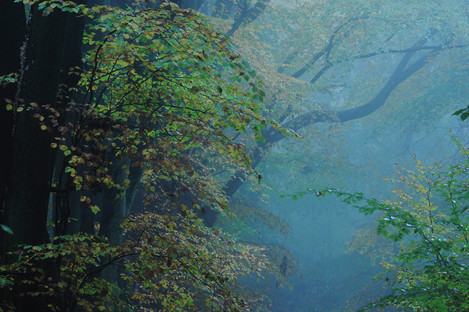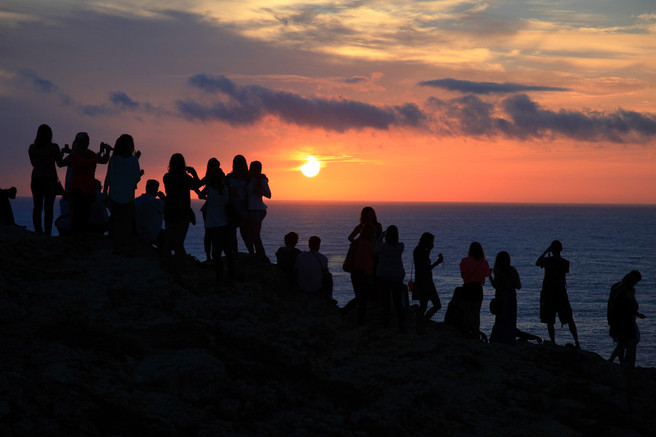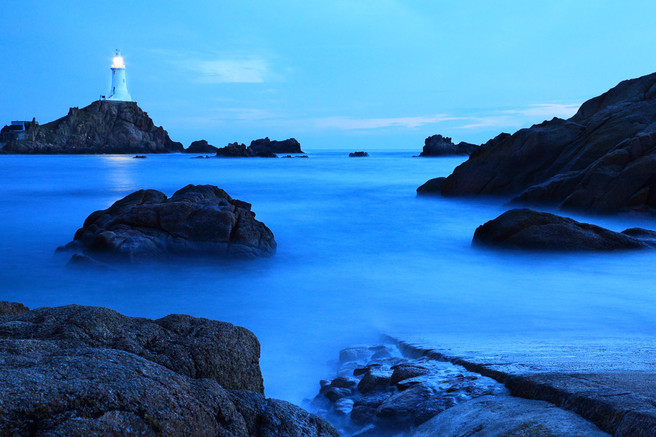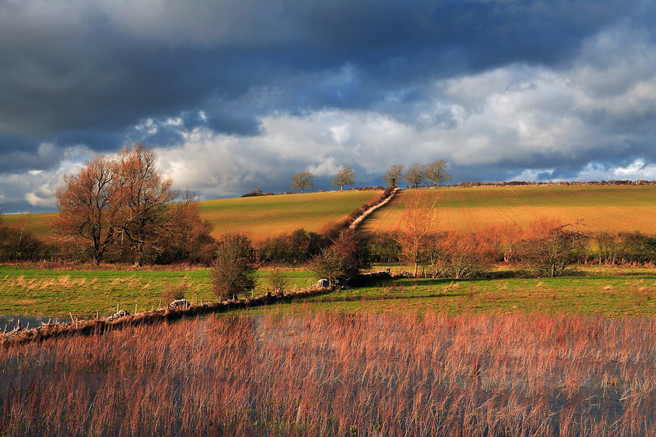Featured Photographer

Beata Moore
Beata Moore is a professional photographer and author. Her work is diverse, from wider views to smaller details and abstract images, both in colour and black & white. She attained a postgraduate degree in botany and her photographs show a strong affinity towards the woodlands and the sea, but also a fascination with human ingenuity in creating architectural masterpieces.
This issue Surrey based Beata Moore has answered our usual questions on issues from women in photography to book publishing
Can you tell me a little about your education, childhood passions, early exposure to photography and vocation?
I have been passionate about photography since the age of twelve, the time I received my first camera. However, I have been around cameras as long as I can remember; my father was taking photographs, as was my brother and my closest friends. I remember spending hours in the bathroom that we turned into a darkroom and I think it was the magic of images appearing on paper that made me pick up the camera more often. I was also very interested in nature, anything from birds to flowers and trees. Drawing and doodling all the time, I was a creative teenager and artistic side of photography was natural for me, while the technical side was much more difficult. Even today it is the same; I must admit that new cameras and new software always fill me with dread.
What are you most proud of in your photography?
I started professional photography in the most difficult, digital era, when everybody is a photographer! Some of my friends said that I was crazy and that I would never have even one book published; within the last 7 years I had six books published and I am currently working on the seventh. I am really proud that I have achieved this by myself, without anyone’s help or any contacts in the industry. I must admit that being able to write helped me in achieving this goal. I would love to say that I took to writing like the proverbial duck to water, but it is not the case; I enjoy undertaking the required research tremendously to which I have a very meticulous approach, but writing is time consuming and I would rather spend my time outdoor, looking for some great shots.
Why do you think there are many fewer female landscape photographers than male and what do you think are the particular challenges for a female photographer"
Being a landscape photographer means that I am often out and about very early in the morning or late in the evening, which I believe is a major obstacle for women with small children, as at a younger age, they are attached to the mother. Physical strength may be an issue for some, but to be honest, nowadays there is no need to lug a very heavy gear around, as one can buy a carbon fibre tripod and a smaller camera body. Safety is probably the biggest issue, although England itself is a very safe country.
In my career I have only been scared once and quite unnecessarily so. I went to the forest at sunrise to photograph some bluebells; you can imagine an idyllic April morning, birds singing, sun filtering through the branches and nobody for miles, or at least I thought so. Suddenly I heard some very heavy footsteps and saw four men running towards me. Their clothes were dirty and covered in mud; alarm bells started to ring in my head. I said to myself, good buy my beautiful camera and semi considered taking out memory card with the images, however there wasn’t enough time for that... they approached at speed, waved to me, smiled and continued running, only then I realised that they took part in some sort of an orienteering competition! As I mentioned before, working alone in England doesn’t bother me at all, although it is nice to have some company during shoots from time to time. I am very lucky, as I can always rely on my friend, yet another female photographer to join me on some of the more challenging trips. In other countries, where safety may be an issue, my husband acts as my assistant, which is great, he acts not only as my “security guard” but as a camel of sorts, I can load my rucksack with loads of lenses and other equipment and he never complains!
You have published a range of books, can you tell us how you got involved in this and some of what you've learned during the process
I have always been interested in nature and took a lot of pictures of trees, later published in a diary. Luckily for me the publisher also saw my pictures of the city of Cracow that was published in one of the photographic magazines. The publisher was very keen on doing the book on this town’s marvellous Renaissance architecture and the contract was signed within days. Little did I know that the author who was to write the book couldn’t do it ... and suddenly there was a long discussion whether I could write it.
Professionally I had a long experience as a translator, but not as a writer. Apprehensively I said yes, and later on agonised for weeks on end if I can do it well enough. Apparently I did, as many more commissions followed. What have I learned in the process of publishing my books? To take a step back and think! l usually want to take pictures of photogenic locations, but having a book to do, you cannot be picky, you need to portray relevant villages, areas, towns, streets or houses, whether beautiful or not. My motto, SST (Stop, Stare, Think) works quite well as it makes me chose the best approach to boring places. Actually, there are no uninteresting places, everything has the potential to be a great shot, one only needs to visualise the place in different light and take the most from it.
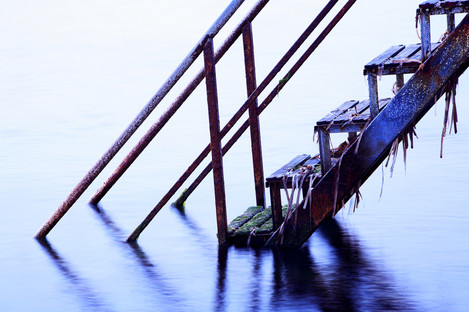 Tell me about why you love landscape photography? A little background on what your first passions were, what you studied and what job you ended up doing.
Tell me about why you love landscape photography? A little background on what your first passions were, what you studied and what job you ended up doing.
My interest in nature was profound and I have attained a postgraduate degree in botany. I am also a qualified translator and interpreter and for many years I have worked in this capacity. Recording nature was just my hobby and I never really thought it will be anything else than that! Luckily for me, my best friend Vanda shared the same passion and we discussed photography endlessly. Until one day, we went on a workshop with Joe Cornish and as they say, the rest is history! It kick started my career, I worked hard to fill in the gaps in my knowledge, I concentrated on my strengths and developed a better understanding of light. As time progressed, my interests widened; now my first love are landscapes and general travel, but nature is still very important to me. In fact I probably would call myself outdoor photographer as the term embraces landscape and nature in one.
In most photographers lives there are 'epiphanic’ moments where things become clear, or new directions are formed. What were your two main moments and how did they change your photography?
I think I owe Joe Cornish new directions. I remember him saying that if you want to understand light, study old masters. Looking at many old paintings in National Gallery and in many books made me understand that it is all about light. From that moment everything became clear. Before I was looking at the elements of the landscape in front of me, now I look at them, but most importantly, I pay more attention to the light.
Could you tell us a little about the cameras and lenses you typically take on a trip and how they affect your photography.
My camera bag is surprisingly light. To start with, I was using Minolta film cameras, my favourite being Minolta 9; unfortunately Minolta couldn’t compete with Nikon and Canon digital cameras and the latter became my best buddy. Canon EOS 5D MK II, to be precise. I work 80% of my time with 24-70mm and 70-200mm Canon lenses. My preferred long zoom is f/4 L IS USM, as it is much lighter than f/2.8 and equally sharp; I love the longer end of it, as it allows me to flatten perspective and achieve pleasing results.
For wider vistas I have Sigma 12-24mm lens, which nicely implies depth and for macro shots I use 150mm f/2.8 APO Macro DG HSM Sigma lens. The filter I can’t live without is a polariser, as I am addicted to saturated colours; it also cuts through glare and eliminates reflections. I am considering buying Lee Big Stopper, allowing very long exposures in daylight, and if by magic, removing people and cars but I am not convinced yet, as all these water turned to milk can be a bit too much, not to mention that calculating exposure becomes a bit tricky. Manfrotto 055PROB tripod with 804RC2 head keeps my camera steady even in quite heavy wind, but I also use a 728B Manfrotto tripod that is so small it almost fits into a handbag (well, a slight exaggeration, but it’s size is very handy when I am restricted with weight)
What sort of post processing do you undertake on your pictures? Give me an idea of your workflow.
I hate spending too much time in front of the computer, so my post processing is minimal. I use Canon’s Digital Photo Professional to convert images from RAW to TIFFs. DPP is easy to use and produces excellent quality JPG and TIFF conversions. Sometimes I adjust white balance as I work in auto white balance setting in camera. I have tried custom white balance setting, but to be quite honest auto setting in my Canon works really well. Later on I work in Photoshop CS5 to clean images a bit and tweak adjustments using curves. The last stage is sharpening images a bit; I use Unsharp Mask on Lightness Channel in Lab Mode. I avoid over manipulation of images but do not hesitate to remove some annoying rubbish that I have overlooked when taking a photo. After that, I religiously copy the files to two additional external drives, so I have three copies of important files. A bit over the top, one might say, but better to be safe than sorry!
Do you get many of your pictures printed and, if at all, where/how do you get them printed?
I use BPD Photech for normal prints and Colourworld Imaging for giclée prints; I can trust colour management of both companies and also their technicians are available for a chat if needed. So far they have never failed me and I am very happy with the quality of the final product.
Tell me about the photographers that inspire you most. What books stimulated your interest in photography and who drove you forward, directly or indirectly, as you developed?
I was always very impressed with Niall Benvie nature photographs. His book “Creative Landscape Photography” thought me a lot about harmony with nature. Joe Cornish had a huge influence on me, his seascapes are divine and his book “First Light” is one of the best books I have ever read. Watching him work, I have also learnt to slow down and pay more attention to details. I am a bit of a galloping photographer, always inspired by what is round the corner, waiting anxiously for the next sunrise or sunset, discovering with childhood enthusiasm yet another village or rock or secluded bay. I would also like to mention Tom Mackie, as his saturated, vivid images made me work harder to achieve bold composition and crisp lines.
Tell me what your favourite two or three photographs are and a little bit about them.
This picture was taken at Cape Saint Vincent on Costa Vicentina, the most south-west point of Europe. I think it brilliantly illustrates the point that I have made earlier, that nowadays everybody is a photographer. I came here for the first time expecting some fantastic cliffs rising vertically from the Atlantic and some nice warm sunset light that would illuminate rocks. What I saw was simply madness! You could hardly see the rocks as they were almost completely covered with tourists watching the sunset. All of them holding cameras and taking pictures. It was like a worshipping place. In fact it was in Neolithic times and later on, the Romans called it Holy Promontory. We don’t believe any more that the sun sinks here hissing into the ocean, marking the edge of the world, but for sure, the sun takes centre stage here and holds hundreds of people in awe.
La Corbière Lighthouse may be one of the most photographs places on Jersey Island, but I can never get bored with it! The rocks and extreme tidal variation around this stretch of Jersey's coast are incredibly treacherous but also so incredibly photogenic. The lighthouse is situated on a tidal island, or to be precise, rock that is connected with Jersey by a causeway. I tried several times to photograph this place; either there was too much water on a causeway or not enough or the sky was not clear or there were people obscuring the view. Perhaps because it took me so long to get this shot, it is my favorite, or perhaps because I love Channel Islands so much and I had such great time when I was working on the book about the islands?
This picture is all about light. I have passed this place so many times and although liked the fields on these softly rolling Cotswolds hills, but couldn’t quite get the picture I had in mind. Eventually, during one stormy day a short break in clouds appeared and I knew immediately that this is my only chance. Five minutes later the magic has gone, the layer of white clouds hid behind the hills and fields flooded by the river lost its pink colour created by the intense sun light.
If you were told you couldn’t do anything photography related for a week, what would you end up doing (i.e. Do you have a hobby other than photography.)
Well, that is easy, I would pack and travel to any European destination, as I am a tirelessly world wanderer or I would be up on the ladder painting or wall papering the house. I also find flower arranging very interesting and therapeutic. I have done proper courses, so bouquets, table decorations and even wreaths are not a problem (not that I would do funeral wreaths for pleasure). You see, I can’t stay still for more than five minutes! It must be that creative side of me that always pushes me to do things.
What sorts of things do you think might challenge you in the future or do you have any photographs or styles that you want to investigate? Where do you see your photography going in terms of subject and style?
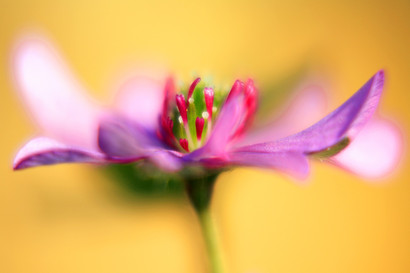 I always wanted to learn and I always try new techniques in photography. If I stop learning it’s like going backwards, so this is not an option for me. A lot of new techniques are just a bit of fun and diversion for me, but I go back to my style, where I feel happy. Lately I have tried some impressionistic photography and it was rewarding. It is difficult to say what new techniques I will try, but I can certainly say what I will not do - HDR. I find it puzzling and unnatural. I love shadows and highlights and pictures devoid of them seem strange and kitschy. The constant challenge for me in photography is the pace of technological change, unpredictable and fast. The basic values of beauty in landscape photography are always going to be the same, the perfect light, composition, colour and harmony. How we portray it, it is an exciting journey that I am not afraid of. The only worry is if we manage to preserve planet Earth beauty and tranquillity for the future generations.
I always wanted to learn and I always try new techniques in photography. If I stop learning it’s like going backwards, so this is not an option for me. A lot of new techniques are just a bit of fun and diversion for me, but I go back to my style, where I feel happy. Lately I have tried some impressionistic photography and it was rewarding. It is difficult to say what new techniques I will try, but I can certainly say what I will not do - HDR. I find it puzzling and unnatural. I love shadows and highlights and pictures devoid of them seem strange and kitschy. The constant challenge for me in photography is the pace of technological change, unpredictable and fast. The basic values of beauty in landscape photography are always going to be the same, the perfect light, composition, colour and harmony. How we portray it, it is an exciting journey that I am not afraid of. The only worry is if we manage to preserve planet Earth beauty and tranquillity for the future generations.
Who do you think we should feature as our next photographer?
Of course my friend and photographer Vanda Ralevska, who is an accomplished landscape photographer with whom I shared many frosty mornings and perfect sunsets!

